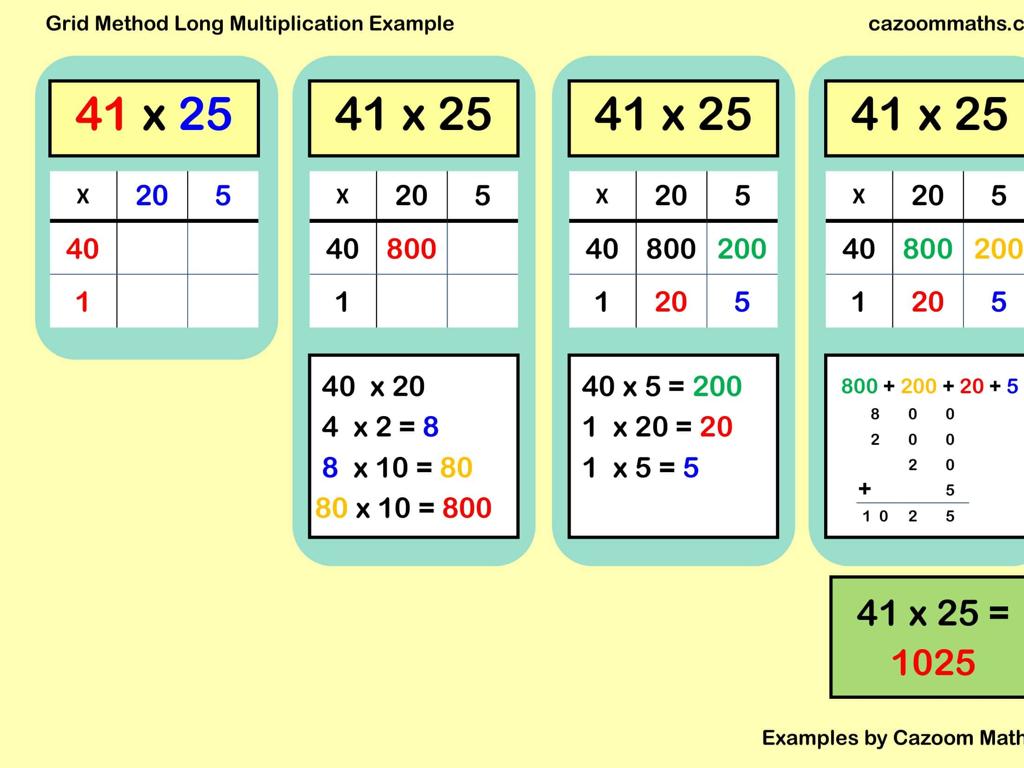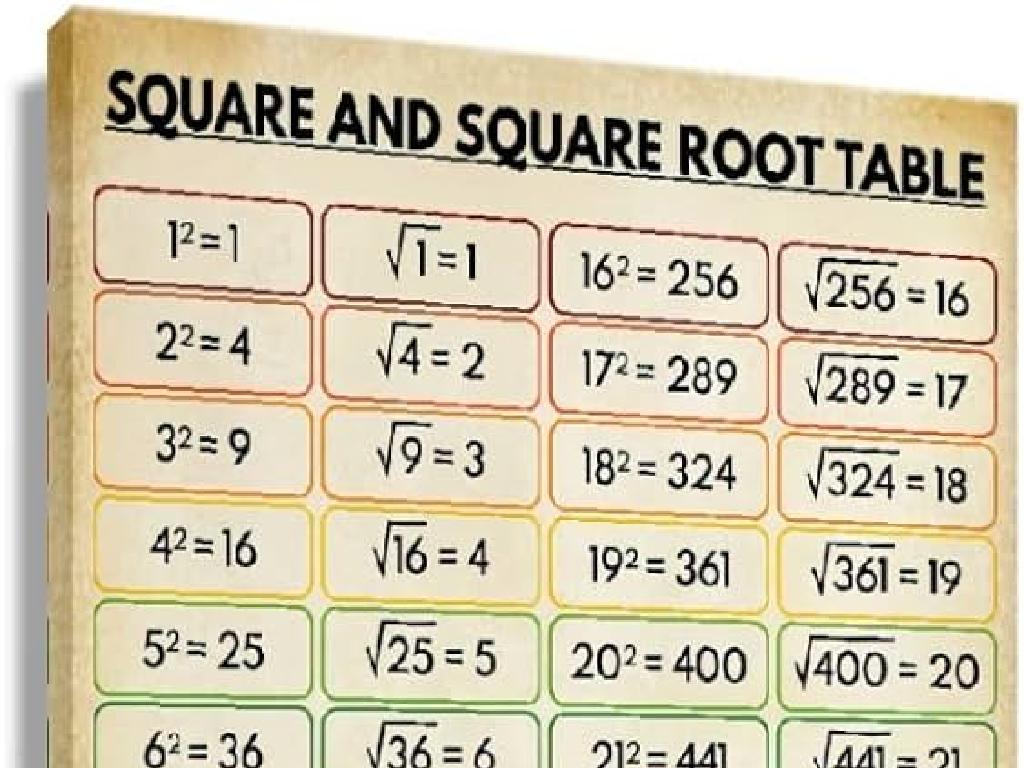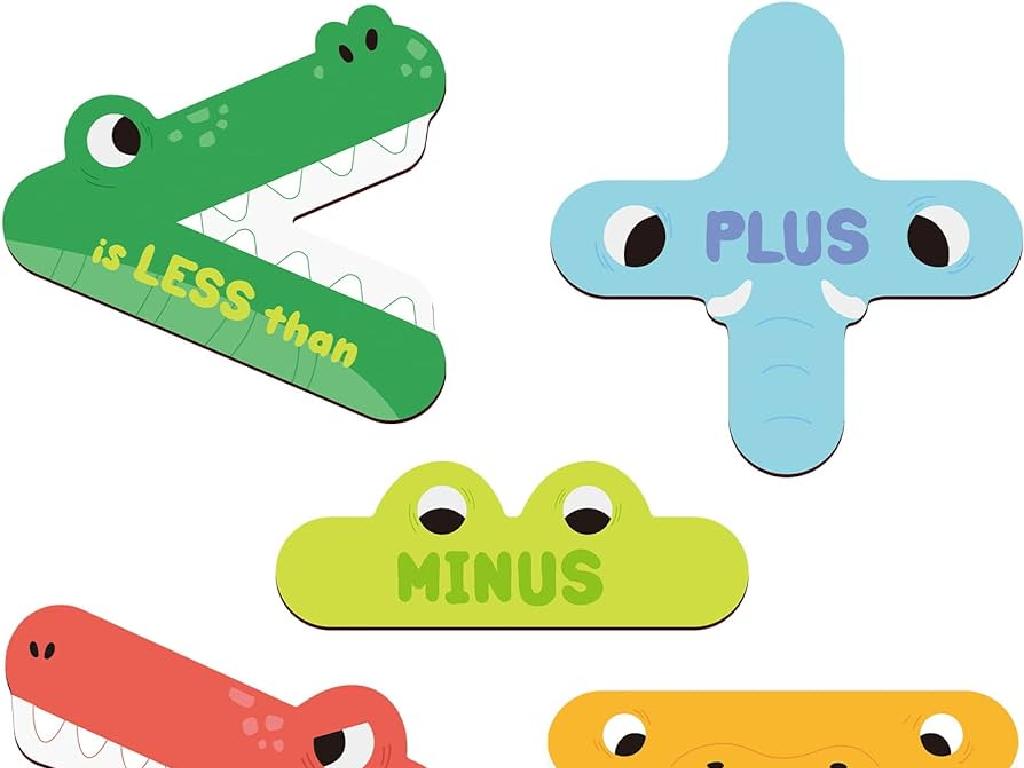Identify Functions Of Animal Cell Parts
Subject: Science
Grade: Eighth grade
Topic: Cells
Please LOG IN to download the presentation. Access is available to registered users only.
View More Content
Welcome to the World of Cells!
– Cells: Life’s building blocks
– Cells’ role in animals
– Basic unit of life, essential for animal structure and function
– Overview of animal cell parts
– Nucleus, mitochondria, cytoplasm, and more
– Functions of cell components
– Each part has a specific role, like energy production or protein synthesis
|
This slide is designed to introduce students to the fundamental concept of cells as the building blocks of all life forms, particularly in animals. Emphasize the significance of cells in the structure and function of animal bodies. Provide a brief overview of the various parts of an animal cell, such as the nucleus, mitochondria, and cytoplasm, and highlight that each component has a distinct and crucial function. This sets the stage for a more detailed exploration of each cell part’s role in subsequent lessons. Encourage students to think about the complexity and efficiency of cells and how each part contributes to the cell’s survival and the organism’s overall health.
Exploring Animal Cells
– Define animal cells
– Basic unit of life in animals, lacks cell wall and chloroplasts
– Compare with plant cells
– Unlike plant cells, animal cells do not have a cell wall or chloroplasts
– Roles of animal cells in the body
– Perform vital functions like energy production, reproduction, and response to environment
– Unique characteristics
|
This slide introduces the concept of animal cells, highlighting their definition, unique characteristics, and the roles they play in the body. Emphasize that animal cells are the fundamental building blocks of all animals and differ from plant cells mainly by lacking a rigid cell wall and chloroplasts. Discuss how animal cells work together to perform essential functions such as producing energy, facilitating growth and reproduction, and responding to environmental changes. Encourage students to think about the importance of each cell part in maintaining the health and functionality of the whole organism.
Cell Membrane: The Protective Barrier
– Structure of the cell membrane
– Composed of a phospholipid bilayer with embedded proteins
– Regulating substance movement
– Controls what enters and exits the cell to maintain homeostasis
– Selective permeability concept
– Allows some substances to pass while blocking others
– Importance for cell survival
|
The cell membrane is a critical component of animal cells, acting as a protective barrier that regulates the internal environment of the cell. It’s composed of a phospholipid bilayer with proteins that aid in transport and signal reception. The cell membrane’s selective permeability is essential for maintaining homeostasis by controlling the movement of substances in and out of the cell. This selective barrier allows essential nutrients to enter, waste products to exit, and prevents harmful substances from entering the cell. Understanding the cell membrane’s structure and function is fundamental for students as it underpins many processes in biology, such as osmosis, diffusion, and cellular communication. Encourage students to think of the cell membrane as a security system that selectively allows entry and exit, ensuring the cell’s optimal function.
Cytoplasm: The Cell’s Workplace
– Cytoplasm: A cell’s foundation
– The semi-fluid that fills each cell, providing a platform for organelles to operate.
– Facilitates cellular processes
– It’s where most cellular activities occur, including metabolism, enzyme activity, and movement of materials.
– Jelly-like substance filling cells
– Composed of water, salts, and organic molecules, cytoplasm helps maintain cell structure.
– Supports organelles
– Organelles are suspended in the cytoplasm, allowing them to function efficiently within the cell.
|
The cytoplasm is a vital component of animal cells, acting as the medium in which all intracellular activities take place. It’s essential for maintaining the pressure inside the cell and providing a platform for organelles to carry out their functions. During the class, explain the role of cytoplasm in both supporting the organelles and enabling the biochemical processes necessary for life. Use analogies, such as comparing the cytoplasm to a busy factory floor or a bustling city, to help students visualize its dynamic nature. Discuss how the cytoplasm’s composition contributes to its functionality and how it interacts with other parts of the cell to sustain life.
Nucleus: The Control Center of the Cell
– Nucleus: Command center of the cell
– Holds the cell’s DNA and manages functions
– DNA & Chromosomes: Life’s blueprint
– DNA contains genes; chromosomes organize DNA
– Nucleus’ role in cell regulation
– Directs cell growth, metabolism, and reproduction
– Impact on protein synthesis
– Nucleus sends instructions for protein creation
|
The nucleus is often referred to as the ‘brain’ of the cell because it directs all cellular activities. It contains the cell’s genetic material in the form of DNA, which is organized into chromosomes. These chromosomes carry the instructions for traits and the functioning of the body. The nucleus controls the cell’s growth, metabolism, and reproduction by regulating the genes that are turned on or off. It’s also responsible for the synthesis of proteins, which are essential for various cellular functions. Understanding the nucleus’ role is crucial for students as it lays the foundation for genetics and molecular biology. Encourage students to think of the nucleus as the cell’s ‘mission control center,’ orchestrating the complex processes that keep the cell alive and functioning.
Mitochondria: The Powerhouse of the Cell
– Mitochondria’s role in energy
– Mitochondria convert nutrients into energy the cell can use.
– Cellular respiration explained
– Process where glucose and oxygen produce energy, water, and carbon dioxide.
– Keeping cells alive
– Without energy from mitochondria, cells cannot function and will die.
– Importance for cell health
|
This slide focuses on the mitochondria, often referred to as the powerhouse of the cell due to its role in energy production. Students should understand that mitochondria are responsible for converting the energy stored in food into a form that cells can use. This process, known as cellular respiration, is vital for cell survival as it powers most of the cell’s functions. Emphasize the importance of mitochondria in keeping cells alive by providing the energy needed for growth, division, and response to environmental changes. Discuss the relevance of mitochondria to overall cell health and how mitochondrial dysfunction can affect an organism. Encourage students to think of mitochondria as the cell’s power plants, and use relatable analogies to help them grasp the concepts.
Lysosomes and Ribosomes: The Cellular Workers
– Lysosomes: Cell’s Digestive System
– Break down waste materials and cellular debris
– Ribosomes: Cell’s Protein Factories
– Synthesize proteins essential for cell functions
– Maintaining Cell Health
– Lysosomes remove debris, ribosomes repair and build
– Synergy of Lysosomes and Ribosomes
– Their combined actions are crucial for cell survival and function
|
This slide focuses on the functions of lysosomes and ribosomes within animal cells. Lysosomes are organelles that contain enzymes to digest waste, acting as the cell’s cleanup crew. Ribosomes are the sites of protein synthesis, producing proteins that are vital for cell structure and function. Together, these organelles play a significant role in maintaining the health of the cell. Lysosomes process damaged organelles and molecules, while ribosomes continuously generate new proteins to replace old or damaged ones, ensuring the cell remains healthy and operational. Discuss the importance of these organelles in the context of cellular metabolism and overall organism health. Provide examples of diseases caused by lysosomal storage disorders to illustrate the consequences of dysfunction in these cellular components.
Endoplasmic Reticulum and Golgi Apparatus: The Cell’s Transporters
– Endoplasmic Reticulum: Synthesis hub
– ER synthesizes proteins and lipids, transporting them within the cell.
– Golgi Apparatus: Protein processing
– Modifies, sorts, and packages proteins for delivery.
– Cell’s Shipping & Receiving Centers
– ER and Golgi work together to distribute cell products.
– Transport pathways in cells
|
This slide focuses on the roles of the Endoplasmic Reticulum (ER) and Golgi Apparatus in cellular transport. The ER is crucial for the synthesis of proteins and lipids and serves as a transport network within the cell. The Golgi Apparatus further modifies these proteins, adding sugars and other molecules, sorting them, and packaging them into vesicles for distribution. Together, these organelles function as the shipping and receiving centers of the cell, ensuring that essential molecules are correctly processed and delivered to their destinations. Emphasize the importance of these organelles in maintaining cellular function and how they work in concert to manage the flow of cellular products.
Class Activity: Build Your Own Cell
– Gather Play-Doh, string, beads, and craft items
– Construct an animal cell model
– Label each cell part accurately
– Discuss the function of each part
|
This hands-on activity is designed to reinforce students’ understanding of the structure and function of animal cell parts. Provide students with Play-Doh, string, beads, and other craft items to construct a 3D model of an animal cell. Each student should accurately label parts such as the nucleus, mitochondria, and cell membrane. After the models are built, have students present their cell and discuss the function of each labeled part. This will help solidify their knowledge through visual and kinesthetic learning. Possible variations of the activity could include group work for larger cell models, using different materials for each organelle to represent the diversity of cell structures, or even creating a digital model using software if resources allow.
Review and Q&A: Animal Cell Functions
– Recap cell part functions
– Open floor for questions
Encourage students to ask any questions they have about animal cells.
– Address misunderstandings
Correct any incorrect notions about cell parts.
– Clarify cell function concepts
Use examples to explain how each part contributes to cell’s life.
|
This slide is designed to reinforce the students’ understanding of the functions of animal cell parts. Begin with a brief recap of the main organelles, such as the nucleus, mitochondria, ribosomes, etc., and their roles. Open the floor to student questions, creating an interactive environment where they feel comfortable asking for clarification. Address any misunderstandings directly, ensuring that all students leave with the correct information. Use analogies and examples to help clarify complex concepts, such as comparing the cell membrane to a security gate or the mitochondria to a power plant. This interactive session will help solidify the students’ knowledge and prepare them for upcoming assessments.
Homework: Mastering Animal Cell Functions
– Complete the worksheet on cell functions
– Study for the upcoming quiz on cell parts
– Review your class notes thoroughly
– Go over notes to reinforce today’s lesson
– Revisit and examine cell models
– Models help visualize cell structures and their functions
|
This homework assignment is designed to reinforce the students’ understanding of the functions of animal cell parts. The worksheet will provide a structured activity to review the material covered in class, while the preparation for the quiz will encourage students to revisit and consolidate their knowledge. Remind students to go through their notes, paying special attention to any diagrams or models used during the lesson, as these can be particularly helpful in visualizing and remembering the functions of each cell part. Encourage them to form study groups if possible, to discuss and quiz each other on the material. The goal is for students to feel confident in their understanding of animal cell functions for the next class.






